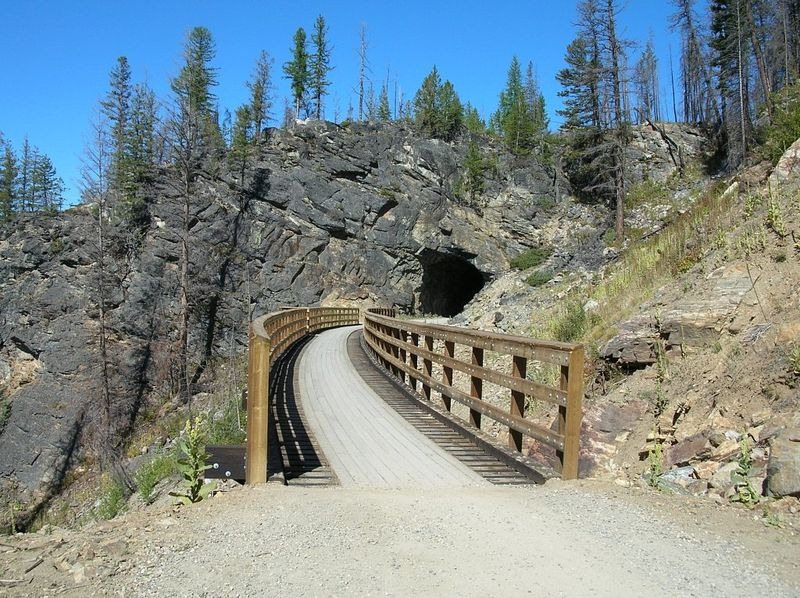The Myra Canyon section of the Kettle Valley Railway in southern British Columbia, Canada, is a 9.6 km section of railway tracks along the famed Myra Canyon located south of Kelowna on Okanagan Mountain. The track traverses the extremely mountainous terrain by means of sixteen timber framed trestles, two steel bridges and two tunnels, all of which are abandoned now, providing mountain bikers endless opportunities at exploration.
The Kettle Valley Railway was built at the turn of the 20th century to meet the growing demands of silver mining in the Southern Interior region of British Columbia. Discovery of silver in Kootenay drove thousands of American prospectors to this region, who took control of the operations there and began sending the riches south of the border. At that time the Canadian Pacific Railway was too far north and east of the Southern Interior for ore to be removed or supplies brought in. In fact it was closer and cheaper to have goods go through the Northern Pacific Railway that went through Spokane, Washington.
This became a political issue and officials quickly decided to build another railroad that would connect Kootenay to the rest of British Columbia in order to preserve Canadian sovereignty of British Columbia, and to also retain the valuable mining revenues within Canada.
Building the railway, however, was not an easy task because there were a lot of mountain ranges between the mainline of the Canadian Pacific Railway and the mines of the Southern Interior. The Myra Canyon section was particularly tricky. To navigate the deep, steep and wide chasm, chief engineer Andrew McCullogh hung the railway tracks to the sides of canyon, laying nearly eleven kilometers of track to reach around something less than one kilometer wide. McCullogh originally built 19 wooden trestles of various lengths and heights. One was later filled in, one was by-passed, and a new one built to span a problem gulley. Construction of the Kettle Valley Railway through the Myra Canyon was such an outstanding engineering achievement that engineers called it “McCulloch’s Wonder.”
The Kettle Valley Railway was opened in 1915 and carried both passenger and freight trains, until the opening of the Crowsnest Highway in 1949, after which keeping the Kettle Valley Railway running was no longer required. In 1962, the last freight train ran through the Kettle Valley Railway, followed by the last passenger train in 1964. In 1978 the track was officially labeled as abandoned.
In 1992, the Myra Canyon Trestle Restoration Society was formed with the goal of preserving the trestles and making them safer for the public. Since its abandonment, the trestles have become popular with hikers and cyclists because of the impressive scenery and spectacular views it provides. There is also a ten mile section of track that still has an authentic steam train running on it, operated by a non-profit society dedicated to preserving the Kettle Valley Railway.
In 2003 a forest fire destroyed 12 of the original 18 wooden trestles. These have been rebuilt to historical specifications using British Columbia wood.
The Myra Canyon was designated a place of national historic significance in January of 2002.

Sources: Myra Canyon Trestle Restoration Society / Wikipedia / BC Adventure / TheKVR.com


























Comments
Post a Comment